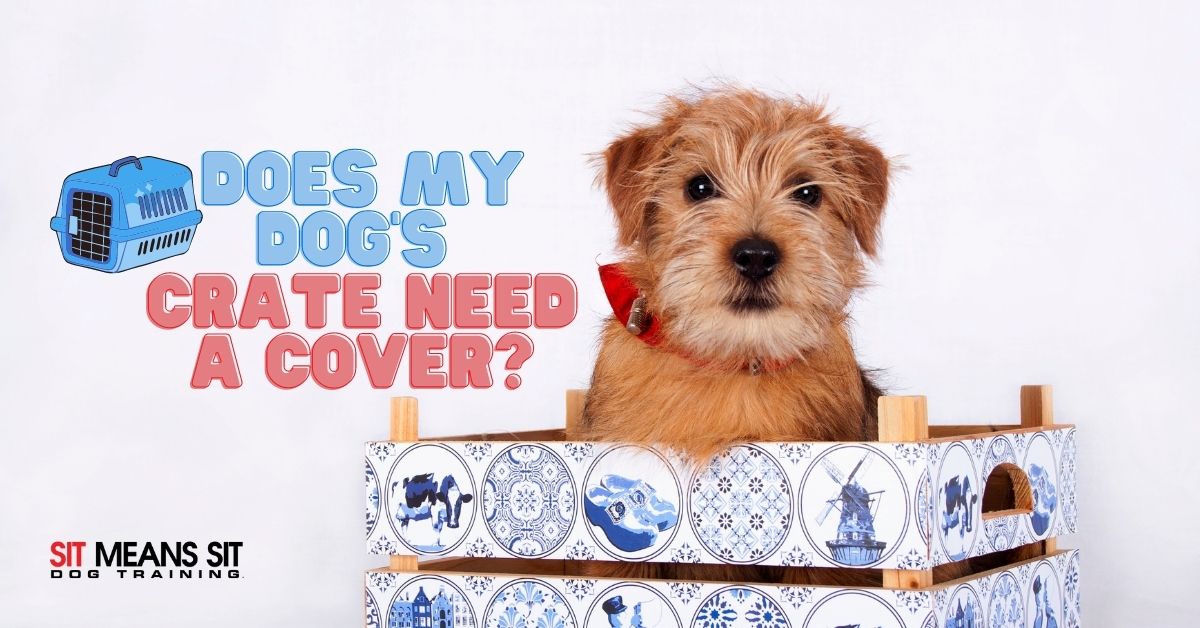
Does My Dog’s Crate Need a Cover?
Whether a puppy or an adult, there is always time to introduce crate training to your furry friends. The issue is, some dogs are scared of the crate and feel claustrophobic, while others may feel secure in the closed-in area. Some dog owners may choose to crate their four-legged friends, but many considerations and responsibilities come with crate training.
Should You Cover Your Dog’s Crate?
Dogs originally denned and have always enjoyed a secluded area in which they felt well protected inside. By covering your dog’s crate, you may be able to reduce outside stimuli like noises and reduce your pup’s anxiety. Surrounding your dog’s enclosure with a cover can also be beneficial for bedtime, car rides, or while being introduced to a new space.
What If My Dog Doesn’t Like It?
Although many dogs will follow their instinct and calm down with a covered crate, other dogs may become more anxious inside. If you notice your pet is unhappy, skittish, or nervous while enclosed, trying an alternative option may be a good idea.
Safety
Before covering your dog’s crate, you should take safety precautions to ensure the wellbeing of your canine. Your dog could suffocate if its cage is incorrectly covered, so it is essential to follow the safety protocol.
- Never completely cover the crate
- Keep the cover away from heat sources
- Choose a breathable fabric
- Avoid blankets that could unravel like knit
- Check the temperature inside the crate, especially in the summer
- Secure the covering, especially if your dog is prone to chewing
Considering these recommendations before covering your dog’s enclosure means there is less likelihood of an accident occurring.
Choosing the Correct Cover
Selecting a crate covering that fits your style and decor may make the bin less of an eye-sore, and you might get more use out of it. If you do not need to invest in a permanent cover, carefully tucked-in sheets or blankets will work for a quick fix as one.
As mentioned before, breathable material is essential when covering your dog’s crate as it should allow for the proper airflow. But if your dog lives outside or spends time in the cold, an insulated covering may make sense for its lifestyle.
Though you are unlikely to soundproof your dog’s crate, some dogs are sensitive to noise, and it may be worth trying to add some soundproofing to their crate. By using padded blankets or furniture pads, you may be able to block out the sounds of the world a little more.
Steps for Covering a Crate
If you have decided that covering your dog’s crate feels like a good idea for your puppy, there are some steps you can take to accustom your dog to the concept better. Your introduction of a crate is likely to go more smoothly by following these steps.
- Drape your covering over the top and tuck in loose ends, but leave the sides uncovered
- Let your pet enter in their own time and slowly increase the time spent inside the crate
- After several tries, covering the sides of the crate may feel more comfortable for your dog
- Reward and praise your furry friend for a job well done.
Do not leave your dog unattended, as they may become skittish or whine and bark.
Just as in other aspects of dog training, consistency is critical when trying to cover your dog’s crate. Although a container calms not all dogs, it can help some of our furry friends block the outside world and relax for a bit.
